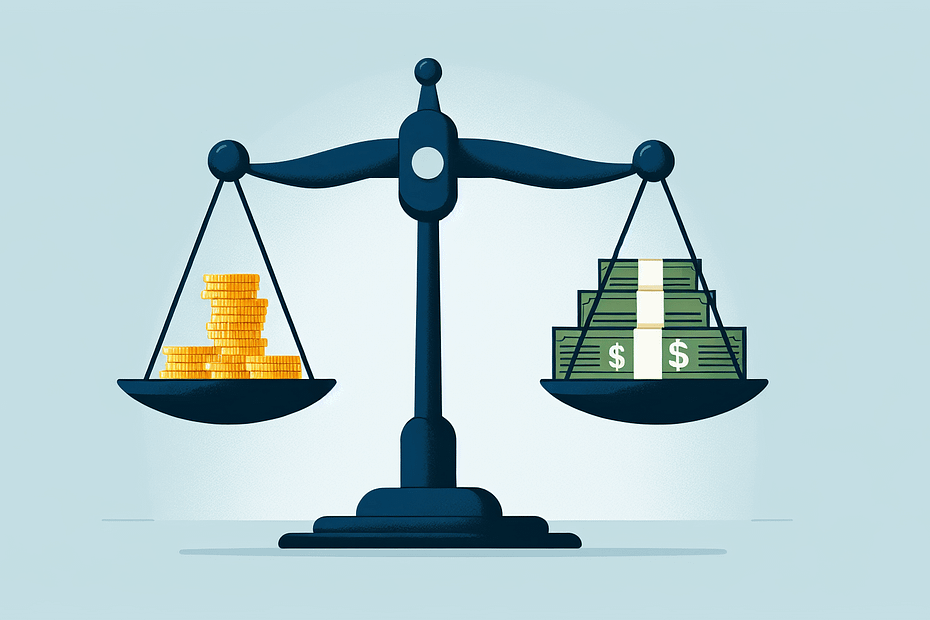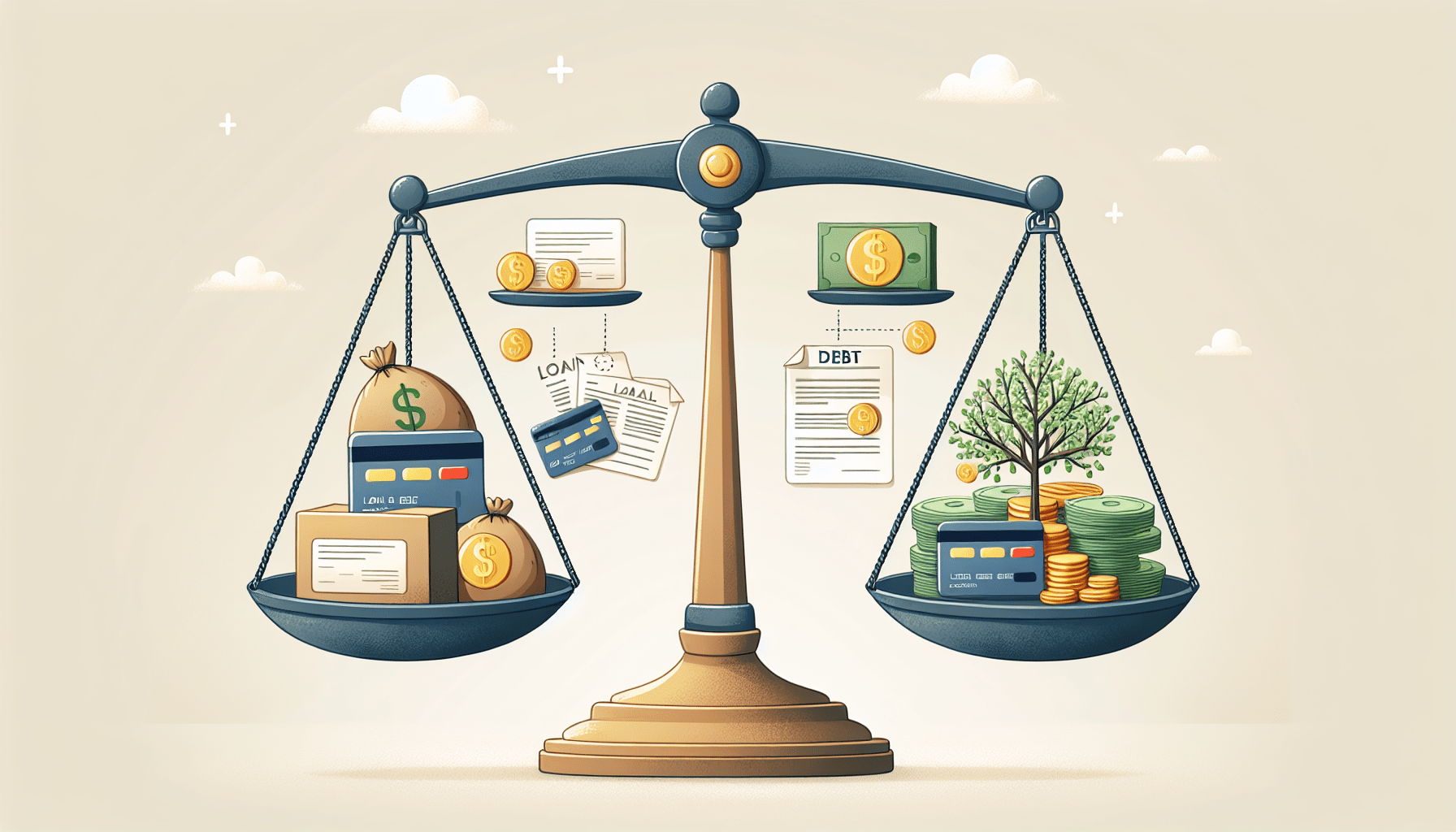In determining the appropriate level of debt for your business, it’s crucial to find a balance between leveraging debt to fuel growth and avoiding excessive risk that could harm your financial health. Analyzing your company’s cash flow, profitability, and overall financial stability can help you assess how much debt your business can comfortably handle. By identifying your business’s capacity to manage debt, you can make informed decisions that support your growth objectives while safeguarding your financial well-being. How do I determine the appropriate level of debt for my business without jeopardizing financial health? You might be wondering about the best approach to managing debt for your business. It’s important to strike a balance between leveraging debt to grow your business and ensuring that you don’t take on too much debt that could potentially harm your financial stability. In this article, we will explore how you can determine the appropriate level of debt for your business without putting its financial health at risk.
Understanding Debt Financing
Let’s begin by understanding what debt financing actually means for your business. Debt financing involves borrowing money from external sources like banks, financial institutions, or private lenders to fund your business operations or expansion projects. The borrowed funds need to be repaid over time, typically with interest.
Debt financing allows you to access capital that you may not have on hand, enabling you to invest in growth opportunities, purchase equipment, or cover operational expenses. It can be a valuable tool for businesses looking to expand or manage cash flow fluctuations. However, taking on debt also comes with risks, such as interest payments, repayment obligations, and the potential for financial strain if not managed properly.
Pros of Debt Financing
Debt financing offers several advantages for businesses, including:
- Access to immediate capital for growth opportunities
- Tax-deductible interest payments
- No loss of ownership or control of the business
- Potential to boost credit scores with timely debt payments
Cons of Debt Financing
On the flip side, there are also drawbacks to consider when taking on debt, such as:
- Interest payments adding to overall cost
- Potential strain on cash flow from repayment obligations
- Risk of default if unable to meet repayment terms
- Impact on credit score if debt isn’t managed responsibly
Calculating Debt Capacity
Determining the appropriate level of debt for your business begins with understanding your debt capacity. Debt capacity refers to the amount of debt your business can reasonably take on without compromising its financial health. It’s essential to assess your ability to service debt obligations, including interest payments and principal repayments, based on your current financial situation.
Debt-to-Equity Ratio
One common metric used to evaluate debt capacity is the debt-to-equity ratio. This ratio compares your business’s total debt to its shareholders’ equity and indicates how much of your business is funded through debt versus equity. A high debt-to-equity ratio may signal that your business is relying heavily on debt financing, while a low ratio may suggest a more conservative approach.
To calculate the debt-to-equity ratio, use the following formula:
Debt-to-Equity Ratio = Total Debt / Shareholders’ Equity
For example, if your business has $500,000 in total debt and $1,000,000 in shareholders’ equity, the debt-to-equity ratio would be 0.5, indicating that half of your business is financed through debt.
Debt Service Coverage Ratio
Another useful metric for assessing debt capacity is the debt service coverage ratio (DSCR). The DSCR measures your business’s ability to meet its debt obligations, including interest and principal payments, based on its operating income. A higher DSCR indicates that your business has sufficient cash flow to cover its debt obligations, while a lower DSCR may suggest financial strain.
To calculate the debt service coverage ratio, use the following formula:
DSCR = Operating Income / Total Debt Service
For example, if your business has $200,000 in operating income and $150,000 in total debt service, the DSCR would be 1.33, indicating that your business can cover its debt obligations 1.33 times over.
Factors to Consider
When determining the appropriate level of debt for your business, it’s essential to consider several factors that can impact your debt capacity and financial health. These factors can help you make informed decisions about taking on debt and managing your financial obligations effectively.
Industry and Market Conditions
Your industry and the broader market conditions can influence your business’s debt capacity. Some industries may be more conducive to higher levels of debt due to stable cash flows or growth opportunities, while others may be more sensitive to economic fluctuations or regulatory changes. Understanding how your industry operates and the market dynamics can help you assess the level of debt that is appropriate for your business.
Growth Opportunities
Debt can be a valuable tool for funding growth opportunities, such as expanding into new markets, launching new products, or acquiring competitors. When evaluating debt financing for growth, consider the potential return on investment, the risk involved, and your business’s ability to service debt obligations. Balancing growth objectives with prudent financial management is essential for determining the appropriate level of debt to support your business’s expansion.
Cash Flow and Liquidity
Your business’s cash flow and liquidity position are critical factors in determining your debt capacity. Adequate cash flow ensures that you can meet debt obligations, cover operational expenses, and maintain financial stability. Evaluate your historical cash flow patterns, projections, and liquidity reserves to assess how much debt your business can comfortably take on without jeopardizing its financial health.
Risk Tolerance
Every business has a different risk tolerance level when it comes to debt financing. Some businesses may be more conservative and prefer to minimize debt exposure to reduce financial risk, while others may be more aggressive in leveraging debt to capitalize on growth opportunities. Identify your risk tolerance and financial objectives to determine the appropriate level of debt that aligns with your business’s goals and risk appetite.
Strategies for Managing Debt
Once you have assessed your debt capacity and considered relevant factors, it’s essential to implement strategies for managing debt effectively to support your business’s financial health. These strategies can help you optimize debt usage, mitigate risks, and ensure that your business remains in a strong financial position.
Create a Debt Repayment Plan
Developing a debt repayment plan is crucial for managing debt obligations and staying on track with payments. Outline a clear timeline for repaying debt, including principal and interest payments, and prioritize high-interest debt to minimize overall borrowing costs. By establishing a structured repayment plan, you can reduce financial strain, improve cash flow management, and maintain a positive relationship with lenders.
Monitor Debt Levels
Regularly monitoring your business’s debt levels is essential for staying informed about your financial position and evaluating your debt capacity. Review key financial metrics, such as debt-to-equity ratio, debt service coverage ratio, and cash flow metrics, to track your business’s debt health and identify any potential red flags. By staying proactive and vigilant in monitoring debt levels, you can make timely adjustments to your debt strategy and avoid financial pitfalls.
Refinance Debt When Beneficial
Refinancing debt can be a strategic move to reduce borrowing costs, improve cash flow, or extend repayment terms. Evaluate opportunities to refinance existing debt at lower interest rates, consolidate multiple loans into a single payment, or renegotiate repayment terms with lenders to better align with your business’s financial needs. Refinancing can help you optimize your debt structure, lower interest expenses, and enhance overall financial flexibility.
Diversify Funding Sources
Relying solely on debt financing can expose your business to heightened risks in case of economic downturns or unexpected changes in the lending environment. Diversifying your funding sources by incorporating equity financing, grants, or alternative financing options can help reduce reliance on debt and provide additional capital flexibility. By diversifying funding sources, you can strengthen your business’s financial stability and mitigate potential risks associated with excessive debt.
Seeking Professional Guidance
Navigating debt management and determining the appropriate level of debt for your business can be complex and challenging. If you’re unsure about how to evaluate your debt capacity, optimize your debt structure, or manage debt effectively, consider seeking professional guidance from financial advisors, accountants, or business consultants. These experts can provide valuable insights, tailored strategies, and actionable recommendations to help you make informed decisions about debt financing and safeguard your business’s financial health.
In conclusion, determining the appropriate level of debt for your business requires a comprehensive understanding of your debt capacity, financial health, and strategic objectives. By assessing key metrics, considering relevant factors, and implementing sound debt management strategies, you can strike a balance between leveraging debt for growth and mitigating financial risks. Remember to monitor debt levels, create a repayment plan, and seek professional guidance when needed to ensure that your business remains on a solid financial footing.


